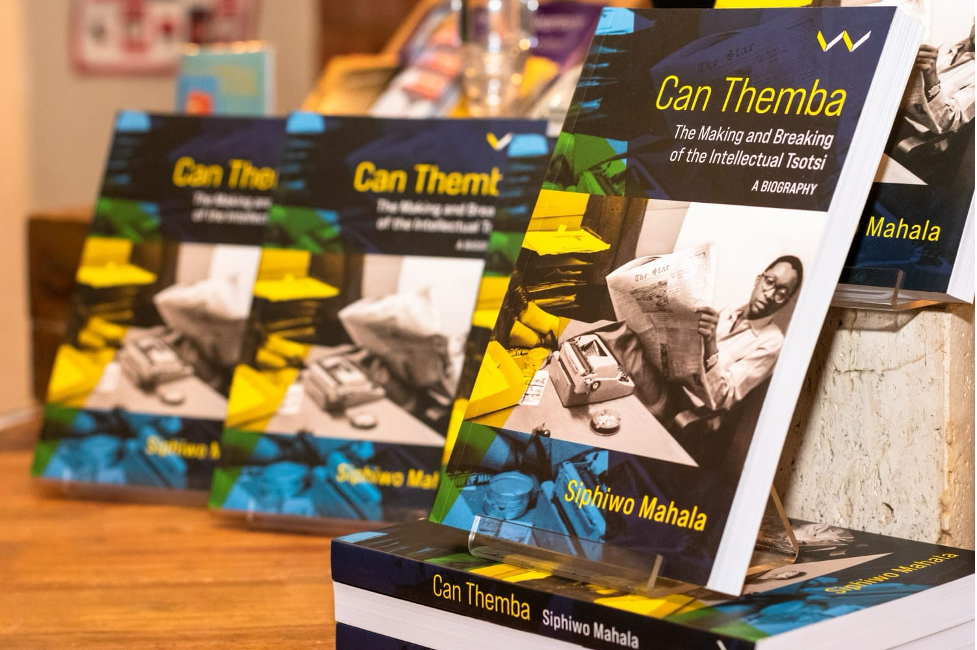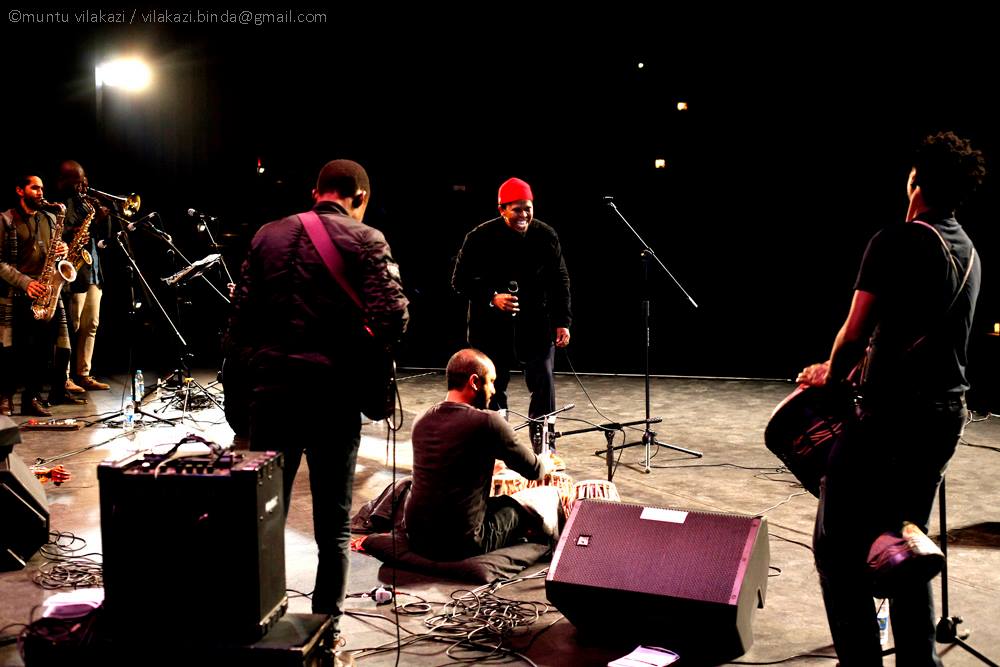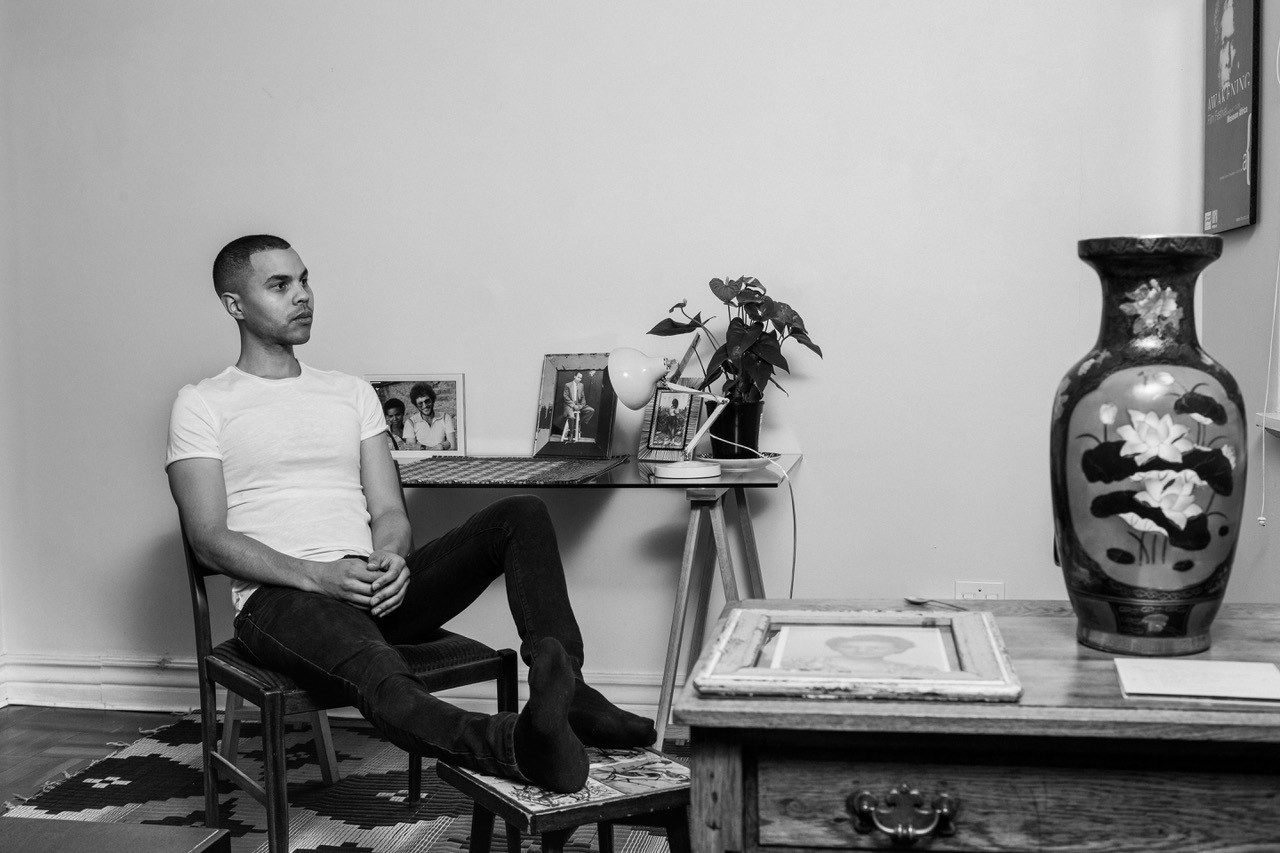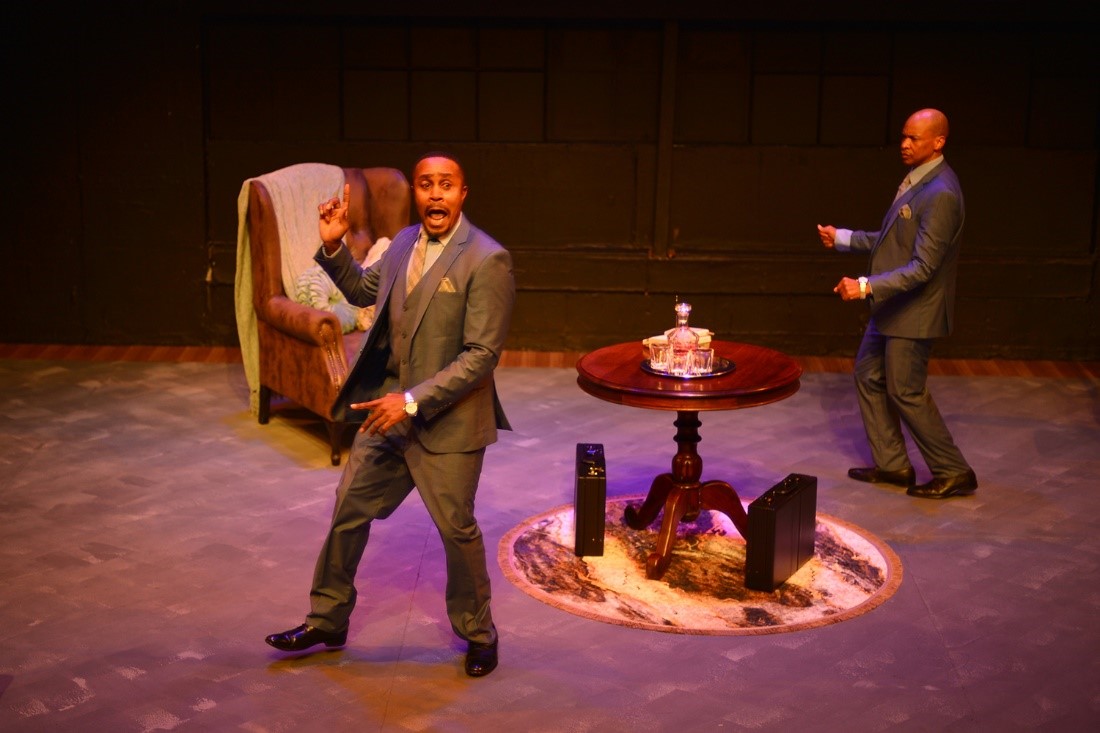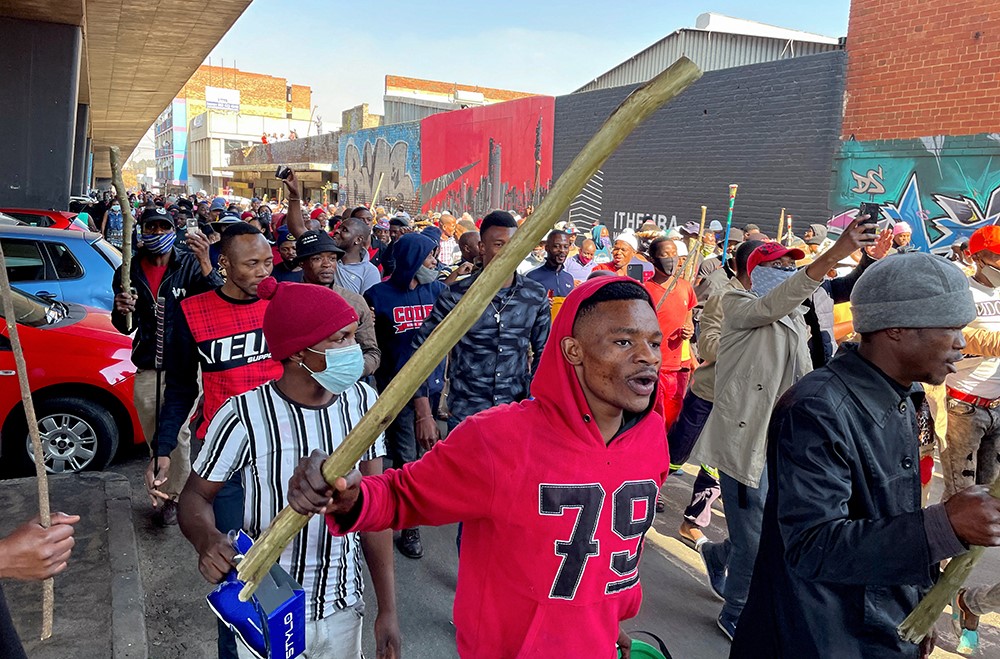This 220-page biography of Can Themba begins, spectacularly, with the jarring misapprehension of a Lewis Nkosi quote – wherein Nkosi describes the Drum-era scribe as, “the supreme intellectual tsotsi of them all.” Mahala cautions us early to desist from becoming too familiar with the above definition, no matter how many times we may have come across it – to read it again with a fresh set of eyes; with a lively understanding not grown dull or complacent from too often encountering the words. This insistence only serves to underline and delineate an erroneous point of interpretation that might otherwise not cause the reader too much consternation. The biographer invites us to remain alert to what a “startling” description of Can Themba and his writing this is, given the fact that, in Mahala’s own understanding, “tsotsis were (and are) feared criminals.” Taking into account the full context, it is difficult to think of a more simplistic and manifestly erroneous understanding of what the word “tsotsi” means in that description. This is not, of course, to argue that “tsotsi” can never be taken to refer to “dangerous criminals.” There are indeed many contexts in which such an interpretation would not be inaccurate, but Nkosi’s description of Can Themba and his work is not one of them.
This early failure of comprehension is an instance that one might be tempted to excuse, given the ubiquitous incidence of the term “tsotsi” in the South African lexicon, then and since. Still, it is a misapprehension, a surface take whose banal reading and anti(con)textual method proceeds to set the tone for many of the trite, slapdash and misleading deductions and conclusions that permeate the book. Indeed, it is a failure of comprehension that cannot be glossed over by any serious reviewer, for it betrays not only a misunderstanding of the Lewis Nkosi quote that has been given such pride of place in the book – prefacing the introduction – but in fact portends an inability to negotiate the quirks and conventions, the intricacies and idiosyncracies of the language of the township, so central to an understanding of Black life in the peri-urban ghettoes of apartheid South Africa, and so important for grasping in all his complexity the mystifying figure that is Can Themba.
While one can appreciate the fact that – having engaged in his painstaking research for well-nigh a decade – Mahala is anxious to say something definitive, something substantive about his chosen subject, this desire is ultimately what drives the biography towards an inability to process complexity and contradiction, resulting in pedestrian inferences that remain underwhelming despite their being repeated ad nauseum throughout the text. In his defence, the biographer is often awake to the contradictions implicit in some of his claims, but this consciousness only leads to a waffling and a wavering between untenable positions – hunting with the hounds while running with the hares, if you will. One often gets the sense that Mahala’s understanding of the tsotsi is conflated with that of another colourful township figure, the pantsula, a notable subculture tied to expressions of fashion, dance and music. How else does one support the misleading claim that tsotsis were “distinguishable through their attire” – when the most that can be said of tsotsis in the Drum era is that they may sometimes have been conspicuous by their ability to afford brands and styles that were the prevalent fashion of the day – which (peri)urban Black folk aspired to wear.
The full Lewis Nkosi quote from which Mahala coaxes the subtitle of his book, and which he deploys to set the scene for his study reads:
“He (Can Themba) lent to his thoughts the same vivid imagery, sharp staccato rhythm of the township language of the urban tsotsi, because he himself was the supreme intellectual tsotsi of them all.”
What then, the reader will rightfully ask, does “tsotsi” mean in that illustration by Nkosi, which points towards a certain embedded incongruence in the nature, life and character of the subject? We must first of all begin to understand that Black life under apartheid, because it rendered the Black subject illegal, had to develop a grammar and praxis of subterfuge in order to survive. In other words, there is a sense in which resorting to varying degrees of tsotsi-ness was inevitable for those whom apartheid designated as sub-human, and especially for Black urban subjects, existing as they did in the zone of the in-between; unwelcome and yet requisite, regimented and yet alien.
This fugitive nature of Black life under a brutally racist regime necessitated, even for the most law-abiding Black subject, a certain flexibility and alertness without which mere survival would be severely compromised. It is this readiness, obligation and ability to trick the system; this artful evasion; this nifty inversion; this dodging of capture when all life was set out as a net to entrap you, a snare to envelop you – this is the nature of the quality of “tsotsi” to which Nkosi refers, when he attempts to explain Can Themba’s writing style. It has nothing whatsoever to do with the “tsotsi” as “feared criminal.” It will become clearer as this analysis proceeds why it is important to resist the lure of such simplistic, complacent characterisations as they appear in Mahala’s biography.
If indeed we must go further in our elucidation of what Nkosi meant by invoking the “tsotsi” in order to describe Can Themba, we may satisfy ourselves by arguing that he is referring to the cunning and the dexterity with which the writer took hold of the coloniser’s tongue and somehow fashioned from it a means for contending with his own struggle, wrenching from the white man’s words an instrument for his own rebellion. Consider, for a moment, the urban argot commonly referred to as tsotsitaal, built over the grammar of several languages, reflecting the melting pot into which the Black bodies requisite for the forward profit march of industrialisation (the particular tsotsitaal here, for argument’s sake, being an agglomeration from the Witwatersrand area) …
Clearly, given the preponderance of this patois across social and generational strata in the life of the township, no serious pundit, no, not even the most casual commentator, would describe tsotsitaal as the language “of dangerous criminals.” And this taal would have to cut across boundaries (real, imagined and manufactured), indeed, wherever it was fashioned across apartheid land – for the simple reason that tsotsi-ness was never a trait the Black subject under apartheid could entirely avoid. You had to channel your inner tsotsi, for instance, when your dompas was required of you and you did not have it.
You could not escape resorting to a tsotsi-like adaptability, a quick thinking on one’s feet, when the colour of your skin was enough to make you suspect and victim in any number of social environs. And finally, whenever the relentless blows of the oppressor found their mark, as they inevitably would, the ability to laugh in the face of calamity, to find humour in the most dire circumstances, was itself a hardiness of spirit which channelled something of the figure of the tsotsi – the figure forever hunted because they were always and already guilty; forever haunted because they were taboo within the very borders that marked out the parameters of their existence.
But let us not belabour the point. Suffice it to say that, where the biography is at pains to portray, for example, the twin-consciousness of Can Themba’s simultaneous intellectual aspiration and street-wise sensibility as a supreme “paradox” … this double-sidedness would best be understood as existing in a continuum whose tension is reflective of the times in which the writer lived – which set out to frustrate and sabotage whichever path you chose, be it good or bad, strait-laced or defiant, just so long as you were Black.
While the biography must of necessity show an interest in Can Themba’s actual writing, careful scrutiny of the terms in which this interest is couched reveal an inordinate preoccupation with the work’s reception – that is, the attention garnered by particular works – rather than with any qualities intrinsic to the writing itself. This obsession with the reading industry around the work, superseding the serious critic’s interest in the writing itself, is alluded to in an alarmingly forthright admission by Mahala in his introduction:
“The decision to select Can Themba as the subject of this biographical text is obviously premised on recognition and appreciation of his work, and is therefore subjective (whatever this last predicate might mean in this sentence).
Even in an age where many are emboldened to make no bones about their absorption with the extrinsic attention economies around certain writers/writing, rather than the innate qualities of particular texts, the above confession is still quite astounding in its candour. Perhaps not surprisingly, given the frenetic energy and confidence with which Mahala has installed himself as Can Themba’s primary present-day interlocutor, the biography also makes mention of a play and a short story written by himself… as powerful proofs of the enduring legacy of Themba’s writing.
Mahala waxes lyrical about the short story The Suit, but somehow manages to say nothing fresh or revealing in the form of a critical appraisal. Instead, the biographer reminds the reader that he, Zukiswa Wanner, and other contemporary South African writers, have written their own short stories based on The Suit. Where Mahala’s and Wanner’s attempts in this regard are concerned, their stories have seen Themba’s remarkable original devolving into foolhardy colouring-in exercises that ostensibly fill in gaps and omissions notable in Bra Can’s story. A discussion of The Suit and its contemporary spin-offs would require its own essay, but having read Mahala’s and Wanner’s pastiches, it strikes me that what distinguishes them from the original is that, where The Suit moves tightly and tersely in the spirit, these well-meaning by-products move nothing in the spirit.
I say well-meaning because the sincerity of these tributes is not in question. Unfortunately, post-apartheid writing in Tutu and Mandela’s Rainbow Nation has doggedly pursued an agenda of obfuscating the most basic penmanship with writing that has, at the very least, more serious literary pretensions. In the analyses and the literary festivals and the prizes, in the universities and the journals and the colloquiums, no attempt is made to distinguish between fiction that seeks merely to entertain (and even to ‘teach’ at the most rudimentary and moralistic levels), and literature that attempts to posit loftier, more complex, more literary directions.
The inevitable result is the enthusiastic present, where prolific writers of the most elemental production-line stories strut their stuff confidently at the conferences to which they have achieved some kind of monopoly of invitation, believing themselves to be, in these southern provinces, the natural successors to the Heinemann African Writers trailblazers – parading a relentless mass of books whose shared and defining characteristic is writing wherein those pearls that may be found are submerged in sweltering swamps teeming with hackneyed logorrhea. But perhaps I digress, somewhat. Having argued that the meat and bones of the actual work are the thing most deserving of scrutiny, one must focus on examining Mahala’s biography on its own merits.
As part of what Mahala describes as his attempt to “generate primary material” beyond just researching the existing literature on his subject, he conducted, “more than twenty exclusive interviews… with people who knew and interacted with Themba personally, or were touched by his work.” As I will demonstrate presently, it would have served the biographer well to approach some of these interviews with a fair amount of circumspection. The biography proper begins, for instance, with the uncorroborated account by one Pitika Ntuli – of having gone to knock on the door of Can Themba’s room one Friday afternoon and, receiving no response, leaving with the suspicion that Themba had drank too much and probably blacked out. This account does not tally with what follows soon after, where, we are informed, having gone to watch a film at a nearby cinema and planning to return to Themba’s room immediately thereafter, Ntuli worried and fretted for the duration of the film – in what felt like “the longest wait of his life”… Such melodramatic renditions do not have the ring of unembellished truth.
It does not inspire confidence that Ntuli’s firsthand narration of the events of that Friday, despite remembering the exact date, records him as having been resident in “Lubombo.” Now, Eswatini is divided into four regions, which are Hhohho, Manzini, Lubombo and Shiselweni. For Ntuli to refer to his abode at the time as having been in Lubombo suggests that his memory is no longer fresh with regard to the specific place name. Indeed, it is only when the distance from his abode to Manzini Town is recorded as 25 kilometres, that one can guess that he lived in Mafutseni. The reader might think that there is no need to be so doubtful about Pitika Ntuli’s account, but this is the same man who has famously declared that he spent a whole year of solitary confinement “in a Death Row cell” in a Swaziland prison, a nebulous claim which is often retold with much mirth and incredulity by former ANC exiles resident in that country around that time. This is why one would have advised some degree of circumspection in how Mahala begins his book, which opens with stating as fact, with much melodrama in the mix (what with “huffing and puffing” and “time freezing” and so on), the account of Can Themba’s death as relayed to him by Ntuli. It is a biographer’s duty to remain alert to these kinds of foibles. No substance to the story of Can Themba’s life is added by the dramatic effect of recording how Ntuli spent a sleepless night, tossing and turning, nor of him drowning his sorrows at “The Reeds” thereafter – by which either the biographer or Ntuli must have meant The Ritz, because there is no record of an establishment called “The Reeds” in that place at any time in the town’s history.
When Mahala introduces the reader to The House of Truth, the modest Sophiatown quarters that Themba turned into a hub of intellectual and literary engagement, he asserts that, “It goes without saying that nothing but the truth could be uttered in the house.” This kind of statement, this kind of sentence… recurs with frustrating frequency in every chapter of Mahala’s book, peddling a pedantic, repetitive verbiage that adds nothing to meaning, and often obscures understanding. Indeed, the thing we are told “goes without saying” in this particular instance most certainly does not “go without saying”… And this is in fact a fudging rather than an illumination of the true record.
In a space like The House of Truth, where robust debate was encouraged, while fuelled by alcohol of every kind, of course many a lie, fallacy and misapprehension were spoken, thrashed out and set to rights. Unfortunately, the biography is replete with these kinds of nondescript, plodding averments, repeated excessively in thinly-varied iterations – adding impressive bulk to the text but often saying nothing substantive or even discernible.
One might forgive a grandiloquence of diction and orotundity of expression if they were used to expand the reader’s understanding, elucidating the writer’s meaning, but the constant repetition of the same ideas and arguments throughout the text would seem to suggest there is a vainer project playing out.
On the question of Can Themba being a “passionate” teacher, one can only infer another failure of comprehension by the biographer, because this conclusion is arrived at via a lazy, if insistent, processing of the facts of Themba’s life. This erratic reasoning persists even when Mahala is compelled to make certain observations that are at odds with his contention. A tavern raconteur with a fondness for engaging in alcohol-fuelled debate of the scholastic kind is not automatically someone who is passionate about pursuing a career in teaching. Given the limited professional aspirations accessible to Black folk under apartheid, it is merely common-sensical that Can Themba would have earnestly pursued the final issuance of his teaching certificate, especially given the adjustment in salary this would entail.
A more perceptive biographer will perhaps come forward and present to us a psycho-social study of how Themba was a deeply frustrated writer, maddeningly so, born in a time and place where there were no prospects of him being able to sustain his family and himself through the kind of creative writing he had been born for – because it is sheer laziness of thought to construe the man’s attempts to make some kind (any kind) of living as an abiding passion for the classroom or the newsroom – or any other structured or formal employment, for that matter. It is difficult to understand how the biography does not reach such a patently inviting conclusion, despite quoting Themba himself when he wrote, prior to his exile, of the desire to be “free as air to write the book, and we shall live off the royalties.”
Perhaps the near-obsessive desire Themba had for being the writer he felt he was destined to become will emerge into clearer view if, and when, more astute research finally uncovers the unfinished manuscript Bra Can was working on at the time of his death (with regards to which Mahala correctly records that he had promised his wife to finish writing it speedily). There is also the weightier matter of a finished manuscript, a collection of short stories, that was either lost or stolen from Can Themba during his years in Swaziland, and about which there is not a single mention in Mahala’s biography. Themba had given that collection the provisional title The Wisdom of the Right Thigh, and perhaps we can still hope that a researcher with sharper sleuthing ability will one day locate the manuscript. The period of his subject’s time in Swaziland is in fact rather poorly researched and recorded by the biographer. Consider the fact that the Zambian journalist Parks Mangena, who ended up in Swaziland via a stint in South Africa, is described simply as being a Swazi journalist. It is quite unforgivable that such omissions and falsehoods could survive both expeditions of Mahala’s manuscript – first as doctoral dissertation, and then as book manuscript – and both his academic supervisor and book editor have not covered themselves in glory by allowing such basic errors to slip through the net.
The same applies to other matters glaringly omitted from the text. For example, there is a nickname the students of St Joseph’s Secondary School gave to their English teacher – makhavithi (a reference to Themba’s deformed face, which was literally covered in what looked like deep gashes and burns) – ‘cavities’ about which Mahala says nothing. What had happened to Can Themba, the handsome man featured on the sleeve and in the glossy centre-piece photographs of Mahala’s biography, that had led him to present such a disfigured visage to those he encountered in Swaziland? No clue is to be found within the pages of Mahala’s book, where there isn’t even a mention of this grotesquely changed appearance. The fact that these are unpleasant details to unearth and bring to light cannot be reason enough for a serious biographer to ignore them, and one begins to suspect that if, as Janet Malcolm once perceptively quipped, the biographer is like a burglar entering into private spaces uninvited, then this study of Can Themba is a very law-abiding piece of work indeed.
It is undeniable that Mahala does not shy away from chronicling Bra Can’s fondness for the bottle, but the note of apology betrays a certain tendency towards censure whose moralistic tenor remains impervious to the social factors of the time, which combined with his personal idiosyncracies to make Themba so susceptible to seeking that kind of debilitating escape. One cannot, for example, write accurately and with compassion about the alcoholism of, say, generations upon generations of Cape farmworkers without seriously considering the consequences of the Dop system, where some of their remuneration was paid in liquid form, and honestly contending with just how hard and brutish life has been for them. Perhaps it is an unfortunate question of temperament, but it seems to me that Themba’s alcoholism is rendered by the biographer in terms that fail to conceal a desire to mount a defence where no crime has been committed. Even the sympathetic tone is somewhat patronising, in the way the disciplined would extend grace towards the weak-willed. On the written page, this comes across as instinctive rather than thoughtful. The dead cannot speak, they cannot answer for themselves, of course, but perhaps leave some room for the possibility that, for some tortured souls, drinking themselves into an early grave is mission accomplished. Is rest. The subterranean hand-wringing does not achieve anything by way of meaning and/or understanding.
In places, the narrative around certain historical and cultural phenomena has a tendency to skate on thin ice. When writing about Can Themba’s vocal opposition to the practice of ilobolo, this proclivity for skimming only the top off such fraught topics leads to a gross misrepresentation. The argument that cash began to replace cattle in the 20th Century and that this was the reason for the practice becoming transactional – is a very simplistic, ahistorical account of the complicated history that unfolded. There is no mention of the fact that, historically, ilobolo was rendered in the currency most reasonable, so that farming implements, crop harvests and any other items of value were common tokens of appreciation from families that did not own great herds of cattle… There is no mention of the intervention of one Sir Theophilus Shepstone, who, having noted that Black men could be persuaded to go and work in the mines in order to afford ilobolo, enacted a cunning rule stipulating that thenceforth, only cattle would be allowed in lieu of bride price – eleven cows for an ordinary man, sixteen for a headman, and exponentially more for chiefs, royalty and so on. Shepstone issued his edict in order to force able-bodied young men to go and offer their labour in the burgeoning mines of the Witwatersrand. It is misguided to present any South African history of ilobolo, even in passing, without taking into account these unpopular but historical truths.
Basic renditions of complex concepts and information frequently result in false binaries and misconstruals on the part of the biographer. For example, it is a superficial exposition to characterise Nadine Gordimer’s standpoint – re the social responsibilities of the writer – as a “counterbalance” to Can Themba’s own concern that literary aesthetics should not be sacrificed on the altar of political expediency. The reader is left with the discomforting feeling of being exposed to a kind of literary name-dropping that is not supported by critical reading and/or a thorough knowledge of the work of the writers cited. Consider, for instance, the utterly bizarre claim that the poet John Keats, “is regarded as the most Shakespearean writer in the world.” Keats? The rhymester of sensuous beauty who tried and failed to pull off work that might have been Shakespearean in its scope, like the abandoned Hyperion as well as The Fall of Hyperion? By who, one is tempted to ask, is Keats regarded as the most Shakepearean writer in the world? When, and where? Why? But these questions would only be a waste of time, because the claim made is simply preposterous and completely baseless. The exercise in literary name-dropping is clearly not matched by any informed interest or expertise in the literature cited. And the instances of this happening in the biography are a dime a dozen… Strange parallels are devised in order to smuggle in the names of the Sobukwes, Mbekis and Mandelas, so as to generate a non-existent affinity on the part of Drum’s renegade scribes within a tradition of Black excellence – being applied with very little subtlety – retrospectively. Surely, the Drum-era writers, who achieved so much with so little, deserve to be studied with greater rigour, deeper sensitivity and more adroit understanding – by contemporary interlocutors who have the advantages of multiple sources of funding, institutional support, time, and an information super-highway that has made research so much less challenging. At the very least, one cannot escape the feeling that, for someone who was such an exquisite wordsmith, so well-read, so erudite, so polished – something of an injustice has been done to the memory of Can Themba when a biography about him is guilty of such rudimentary lapses in construction and expression.
*This article was originally published in Herri 9

